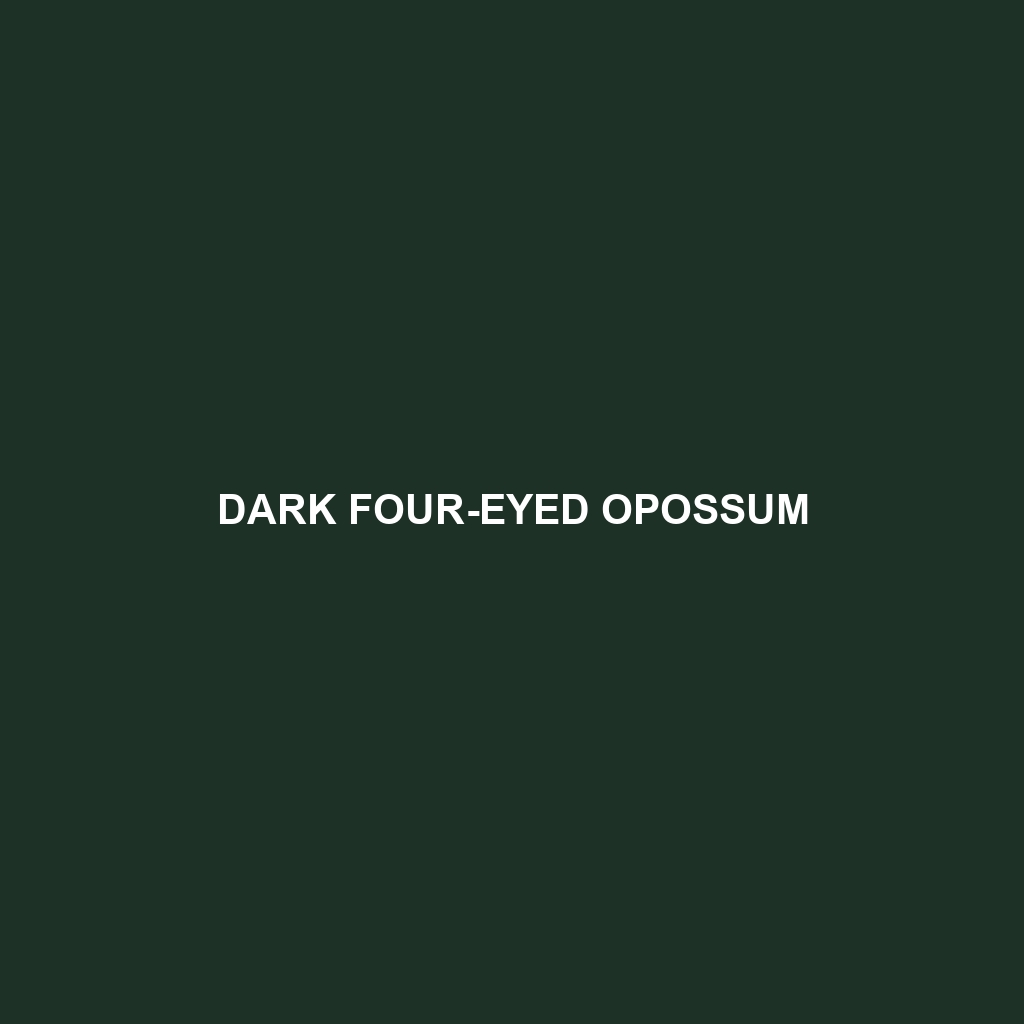Dark Four-eyed Opossum (Philander melanurus)
:
The Dark Four-eyed Opossum (Philander melanurus) is a fascinating and unique marsupial native to South America. This nocturnal creature is named for the distinctive white spots above its eyes, which give the illusion of having four eyes. Known for its adaptability and secretive nature, the Dark Four-eyed Opossum plays a vital role in its ecosystem by controlling insect populations and facilitating seed dispersal.
Physical Characteristics:
Size: The Dark Four-eyed Opossum typically measures about 20-30 cm (8-12 inches) in body length, with an additional tail length of approximately 25-35 cm (10-14 inches).
Coloration: This opossum has a sleek, dark gray to nearly black fur coat. The characteristic white or light-colored spots above each eye stand out vividly against the darker fur.
Special Features: One of the most distinguishing features is the opossum’s prehensile tail, which is partially furred near the base and scaly towards the tip. This tail helps with balance and grasping branches as the animal navigates the forest canopy.
Behaviors:
Social Interactions: Generally solitary, the Dark Four-eyed Opossum is most active at night (nocturnal). It tends to be territorial and uses scent markings to communicate and establish boundaries.
Feeding Habits: An omnivore, this opossum’s diet includes fruits, insects, small vertebrates, and occasionally carrion. Its varied diet helps it survive in diverse environments.
Ecological Roles: As both a predator and prey species, the Dark Four-eyed Opossum is integral to its ecosystem. It helps control insect populations and aids in seed dispersal, which is crucial for forest regeneration.
Habitats:
Typical Habitats: This opossum inhabits tropical and subtropical forests, often preferring dense underbrush near water sources like rivers and streams. It can also adapt to secondary forests and disturbed areas.
Geographical Range: Its range extends across regions in northern and central South America, including countries like Brazil, Colombia, and Peru.
Adaptations:
Nocturnal Lifestyle: Adapted to a nocturnal lifestyle, the Dark Four-eyed Opossum has keen night vision and heightened sense of smell and hearing to locate food and avoid predators in the dark.
Arboreal Adaptation: Its prehensile tail and agile limbs make it an excellent climber, capable of navigating through the forest canopy to forage and escape threats.
Reproductive Strategies: Females possess a forward-opening pouch where they rear their young, offering protection during the early stages of development.
Conservation Status:
Current Status: The Dark Four-eyed Opossum is currently listed as Least Concern by the IUCN Red List. However, habitat destruction and fragmentation pose ongoing threats.
Conservation Efforts: Efforts focus on preserving natural habitats through the establishment of protected areas and promoting sustainable land-use practices to ensure the survival of this species.
Fun Facts:
“Four-eyed” Illusion: The illusion of having four eyes is a defense mechanism. Predators may hesitate to attack an animal that appears to have more eyes, potentially confusing them about the opossum’s true orientation.
Marsupial Diversity: The Dark Four-eyed Opossum is one of several species in the Philander genus, showcasing the rich diversity of marsupials in the Americas.
Remarkable Resilience: This opossum can tolerate a range of environmental conditions, making it one of the more resilient species in its family.
By understanding the Dark Four-eyed Opossum’s unique traits, behaviors, and ecological significance, we can better appreciate the intricate balance of the ecosystems it inhabits and the importance of conservation efforts to protect this remarkable species.
